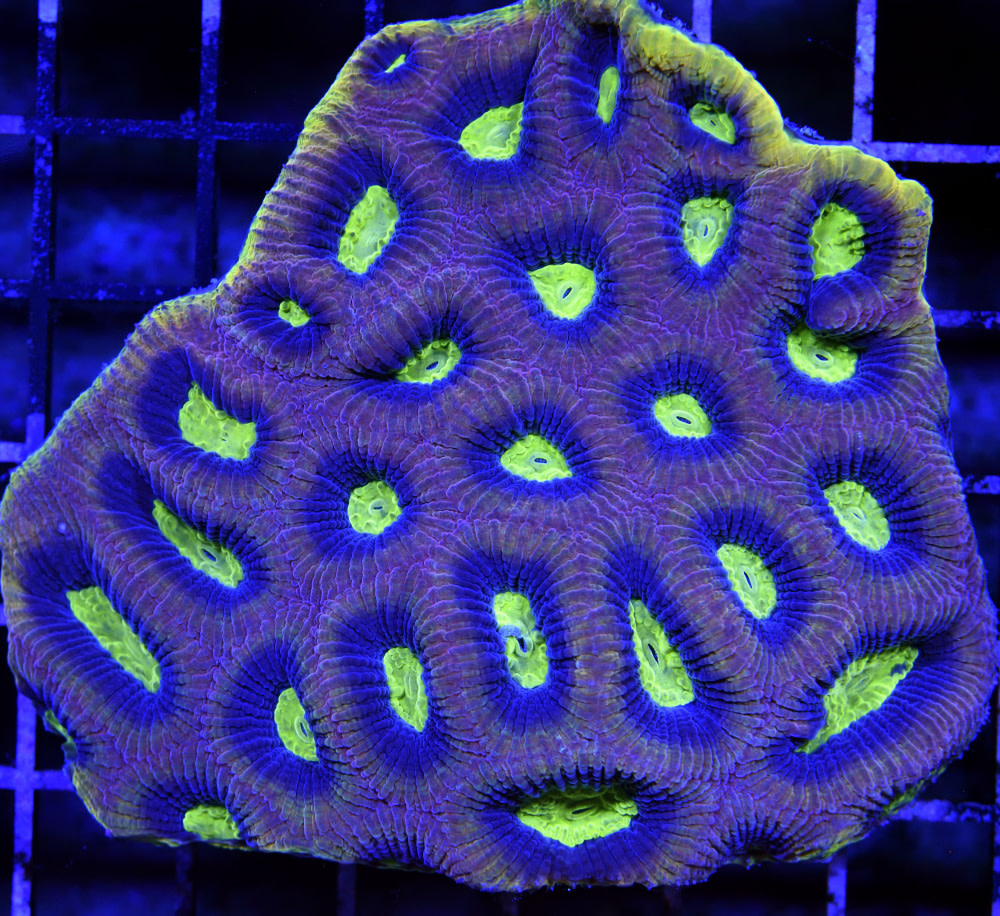Goniastrea
(Goniastrea sp.)

Placement: Bottom to Middle
Light: Medium
Flow: Medium
Care Level: Easy
Type: LPS
Compatibility: Semi-Aggressive
Growth Rate: Moderate
Photosynthetic: Yes

At first glance it can be hard to tell the Goniastrea coral from its more well known cousin, the Favia. Also known as the Closed Brain Coral, their tendency to grow in a ball shape rather than the generally flat shape of favia colonies sets them apart. They are becoming increasingly popular and are available in a wide variety of colour morphs with two of the most popular being Dragon Soul and a blue, purple and green tricolour. They are capable of growing quite large both in the wild and in a home aquarium.
Goniastrea are found throughout the world’s warm oceans at depths of between 2 and 15 meters. They can be found in a variety of habitats, including upper reef slopes and lagoons. While they are very common in the wild, the majority of frags that are available for sale are aquacultured for specific colourations. This is increasingly true as the coral becomes more popular. In a home tank they are almost always placed on the substrate in an area of moderate lighting and flow. In a large home aquarium they can also be placed on the rockwork if there is a large enough flat surface.
Goniastrea require moderate levels of both light and flow. If the light is at the proper level then the coral’s colours should be quite vibrant. If the coral is turning brown it may not be receiving enough light and one that is bleaching or becoming white may be receiving too much light. Flow should be sufficient to prevent detritus from collecting on the coral. This is especially important for coals that are placed on the substrate.
Like the vast majority of corals available in the hobby, Goniastrea are photosynthetic and can use aquarium lighting to meet their energy needs. However, they do benefit from periodic spot ,feeding. They can be fed pellets designed for LPS corals such as Vitalis LPS food, just make sure to turn the flow off while feeding.
With the proper tools Goniastrea can be fragged but it is a bit more difficult than propagating a branching LPS. A band saw can be used to carefully cut a piece from the mother colony. The new frag, and possibly the colony, can be dipped in iodine to reduce the chances of infection.
